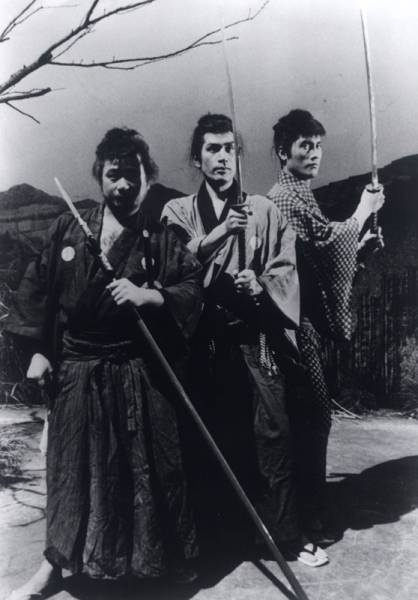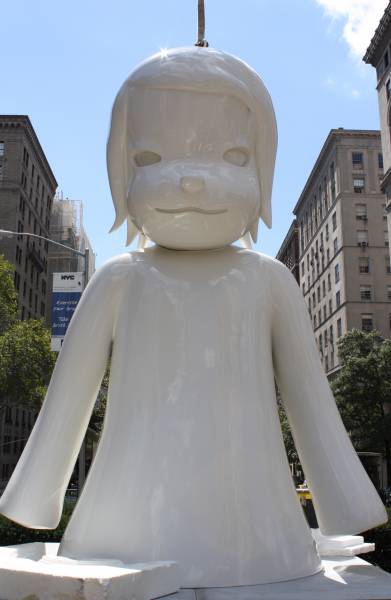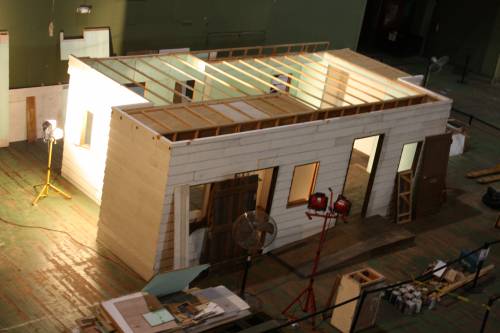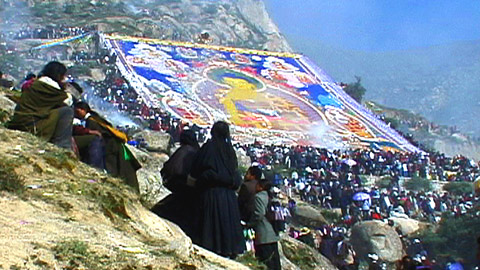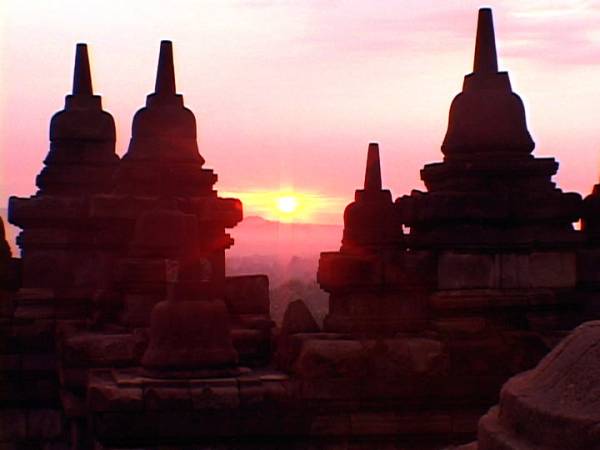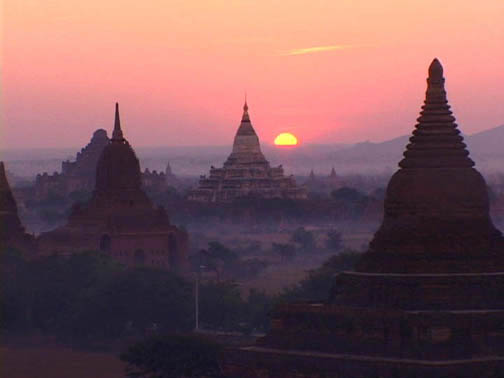THREE OUTLAW SAMURAI (SANBIKI NO SAMURAI) (Hideo Gosha, 1964)
Asia Society
725 Park Ave. at 70th St.
Friday, November 12, free, 6:45 (advance registration recommended)
Series runs through December 10
212-517-asia
www.asiasociety.org
 Screening as part of Asia Society’s Japanese Cinema 1960s series, THREE OUTLAW SAMURAI stars Testsoro Tamba as Shiba, a wandering samurai who comes upon a town mired in chaos. The peasants have kidnapped the magistrate’s daughter (Miyuki Kuwano) to protest unfair taxation, but the magistrate has little time for them. Shiba is soon joined by Sakura (Isamu Nagato) and Kikyo (Mikihiro Hira) as they fight for what’s right. Director Hideo Gosha’s debut film, a classic Eastern Spaghetti Western, is more cerebral than many of its contemporaries, as it often opts for mental battles rather than swordfighting action. Sakura’s transition from a brash killer to a concerned potential lover is inspiring and heartbreaking, while Kikyo learns there’s more to being a samurai than wine and women. But don’t worry; Gosha makes sure we don’t get too bogged down in life lessons and sentimentalism. Tadashi Tsushima’s jazzy score is awesome. The series continues December 3 with Mikio Naruse’s YEARNING (1964) and December 10 with Kihachi Okamoto’s AGE OF ASSASSINS (1967) and Eiichi Kudo’s THE FORT OF DEATH (1969).
Screening as part of Asia Society’s Japanese Cinema 1960s series, THREE OUTLAW SAMURAI stars Testsoro Tamba as Shiba, a wandering samurai who comes upon a town mired in chaos. The peasants have kidnapped the magistrate’s daughter (Miyuki Kuwano) to protest unfair taxation, but the magistrate has little time for them. Shiba is soon joined by Sakura (Isamu Nagato) and Kikyo (Mikihiro Hira) as they fight for what’s right. Director Hideo Gosha’s debut film, a classic Eastern Spaghetti Western, is more cerebral than many of its contemporaries, as it often opts for mental battles rather than swordfighting action. Sakura’s transition from a brash killer to a concerned potential lover is inspiring and heartbreaking, while Kikyo learns there’s more to being a samurai than wine and women. But don’t worry; Gosha makes sure we don’t get too bogged down in life lessons and sentimentalism. Tadashi Tsushima’s jazzy score is awesome. The series continues December 3 with Mikio Naruse’s YEARNING (1964) and December 10 with Kihachi Okamoto’s AGE OF ASSASSINS (1967) and Eiichi Kudo’s THE FORT OF DEATH (1969).
